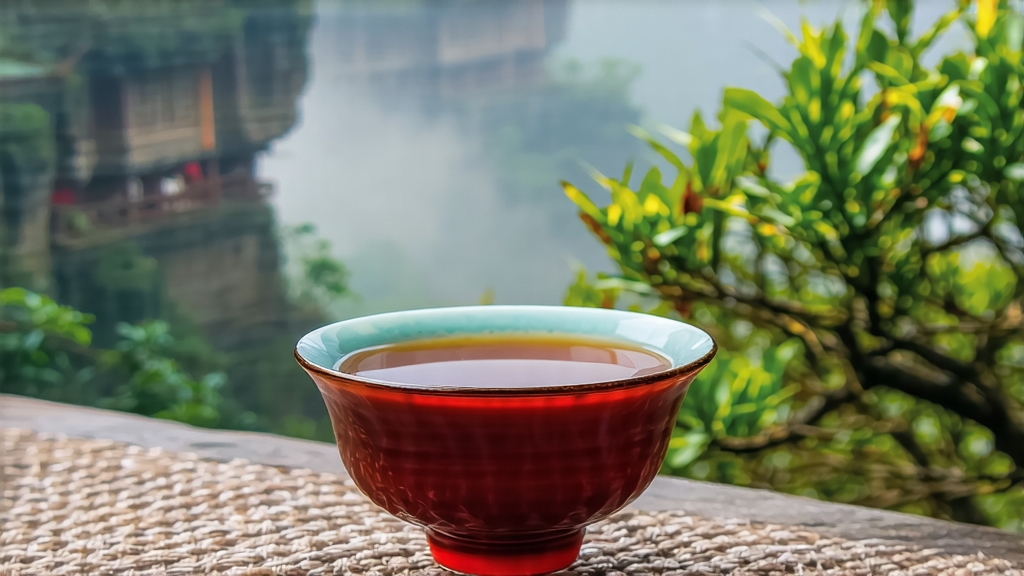
Few teas carry as much myth, romance, and mineral magic as Da Hong Pao, the “Big Red Robe” that grows on the sheer rock faces of Wuyi Mountain in northern Fujian. To Chinese tea lovers it is not simply an oolong; it is a cultural monument, a liquid echo of Song-dynasty poets, Ming-era imperial tribute caravans, and modern auction headlines where 20 g of mother-tree leaf once sold for more than one million RMB. For the international drinker, Da Hong Pao offers a passport to the concept of yan yun—“rock rhyme”—a lingering stony sweetness that feels like licking a wet slate after a spring rain.
History: From Imperial Robe to Global Cup
The legend most often retold speaks of a Ming scholar on his way to the capital exams who fell ill at the foot of Wuyi’s Nine-Dragon Gorge. Monks from the nearby Tian Xin Yong Le temple brewed leaves picked from four stunted bushes clinging to the cliff; the scholar revived, passed the exams, and returned in gratitude, draping his crimson imperial robe over the bushes to protect them from the mountain wind. Whether apocryphal or not, the tale fixed the name “Big Red Robe” in the local lexicon by the early 17th century. Qing records list the tea as a tribute item, transported north in small bamboo-lined crates along the Mei-ling courier road, then by Grand Canal to the Forbidden City. When British botanist Robert Fortune smuggled tea secrets out of China in 1848 he bypassed Wuyi, convinced only black tea was grown there; thus Da Hong Pao remained largely unknown in the West until the 1980s, when state-owned tea institutes began cloning the mother trees and exporting roasted oolong to Europe and North America.
Terroir: Why Cliffs Matter
Wuyi’s danxia landform—purple-red sandstone cliffs carved by 200 million years of weathering—creates a unique microclimate. Daytime cliff faces reflect heat onto the tea bushes, while nightly mountain mist delivers moisture without standing water. The sparse soil is essentially mineral-rich grit; roots must dive several meters through fissures to find sustenance, concentrating aromatic compounds. Four original mother trees still survive on a 30-meter ledge above the Jiu-Long Ke (“Nine-Dragon Nest”), now protected by UNESCO and no longer harvested. Every spring, cuttings descended from those trees are planted in similar cliff gardens scattered across the 60 km² Wuyi core protection zone, ensuring genetic continuity and the prized yan yun.
Varieties: Bequeathed Bloodlines
- Qi Dan: A first-generation direct clone of the mother trees, genetically verified in 2006. It delivers the purest “cliff taste” with pronounced flint and orchid notes.
- Bei Dou #1: Developed in 1964 from cuttings taken before protection laws; cultivated at lower elevations but still within the scenic reserve. Slightly softer body, cocoa aroma.
- Que She (“Sparrow Tongue”): A naturally occurring variant with smaller leaves, lighter oxidation, and a honeysuckle finish; beloved in southern Fujian.
- Commercial Blends: Leaves from peripheral townships such as Huang Cun or Xing Cun are charcoal-roasted to mimic yan yun; legally sold as “Wuyi Da Hong Pao” but lack the mineral depth. Price can range from 20 USD to 2,000 USD per 500 g depending on provenance and roasting master.
Craft: The Dance of Fire and Time
Harvest begins in late April when three half-mature leaves and a bud are plucked between 9 a.m. and noon, ensuring dew evaporation. The leaves are spread 3 cm thick on bamboo trays to wither under natural mountain breeze for 2–4 hours, then tossed in 70 cm diameter rattan drums every hour for 8–10 cycles. This bruising initiates oxidation at the leaf edge while the core stays green, the hallmark of Qing Xiang (green fragrance) style. Once the leaf emits a ripe peach aroma, oxidation is halted by a 220 °C tumble in electric woks for 3–5 minutes; the greener style is fixed at 15 % oxidation, traditional cliff style at 30 %. Next comes the critical kneading: 40 minutes of mechanical rolling alternated with hand-pressing to twist the leaf into the characteristic “dragonfly head,